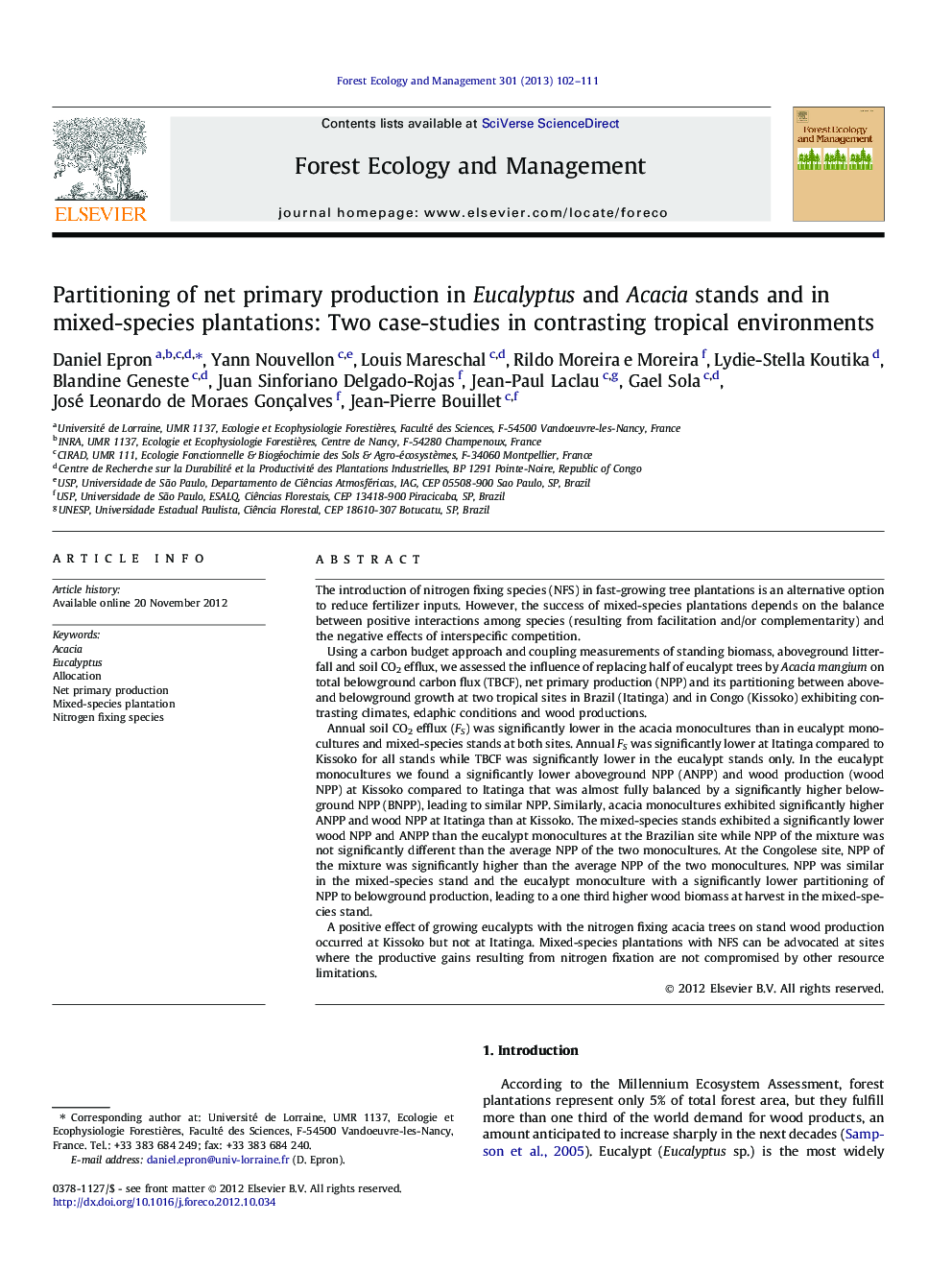| کد مقاله | کد نشریه | سال انتشار | مقاله انگلیسی | نسخه تمام متن |
|---|---|---|---|---|
| 87032 | 159227 | 2013 | 10 صفحه PDF | دانلود رایگان |

The introduction of nitrogen fixing species (NFS) in fast-growing tree plantations is an alternative option to reduce fertilizer inputs. However, the success of mixed-species plantations depends on the balance between positive interactions among species (resulting from facilitation and/or complementarity) and the negative effects of interspecific competition.Using a carbon budget approach and coupling measurements of standing biomass, aboveground litterfall and soil CO2 efflux, we assessed the influence of replacing half of eucalypt trees by Acacia mangium on total belowground carbon flux (TBCF), net primary production (NPP) and its partitioning between above- and belowground growth at two tropical sites in Brazil (Itatinga) and in Congo (Kissoko) exhibiting contrasting climates, edaphic conditions and wood productions.Annual soil CO2 efflux (FS) was significantly lower in the acacia monocultures than in eucalypt monocultures and mixed-species stands at both sites. Annual FS was significantly lower at Itatinga compared to Kissoko for all stands while TBCF was significantly lower in the eucalypt stands only. In the eucalypt monocultures we found a significantly lower aboveground NPP (ANPP) and wood production (wood NPP) at Kissoko compared to Itatinga that was almost fully balanced by a significantly higher belowground NPP (BNPP), leading to similar NPP. Similarly, acacia monocultures exhibited significantly higher ANPP and wood NPP at Itatinga than at Kissoko. The mixed-species stands exhibited a significantly lower wood NPP and ANPP than the eucalypt monocultures at the Brazilian site while NPP of the mixture was not significantly different than the average NPP of the two monocultures. At the Congolese site, NPP of the mixture was significantly higher than the average NPP of the two monocultures. NPP was similar in the mixed-species stand and the eucalypt monoculture with a significantly lower partitioning of NPP to belowground production, leading to a one third higher wood biomass at harvest in the mixed-species stand.A positive effect of growing eucalypts with the nitrogen fixing acacia trees on stand wood production occurred at Kissoko but not at Itatinga. Mixed-species plantations with NFS can be advocated at sites where the productive gains resulting from nitrogen fixation are not compromised by other resource limitations.
► We studied the replacement of half a eucalypt stand with interplanted acacia.
► Effects on wood production was different between both sites.
► Shifts in carbon partitioning explained these responses.
► Balance between facilitation and competition may account for these shifts.
Journal: Forest Ecology and Management - Volume 301, 1 August 2013, Pages 102–111